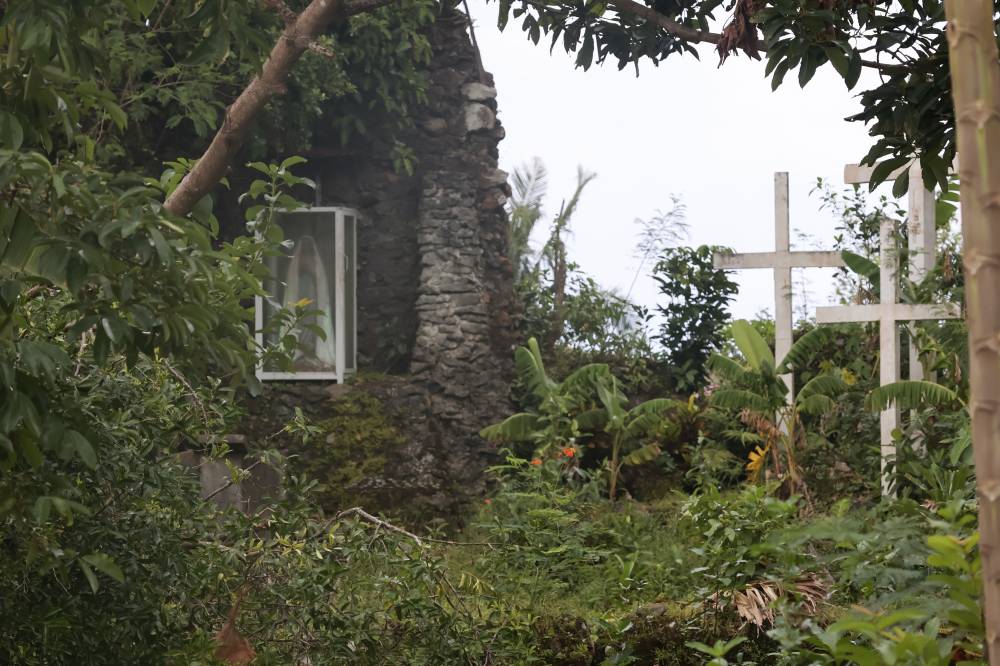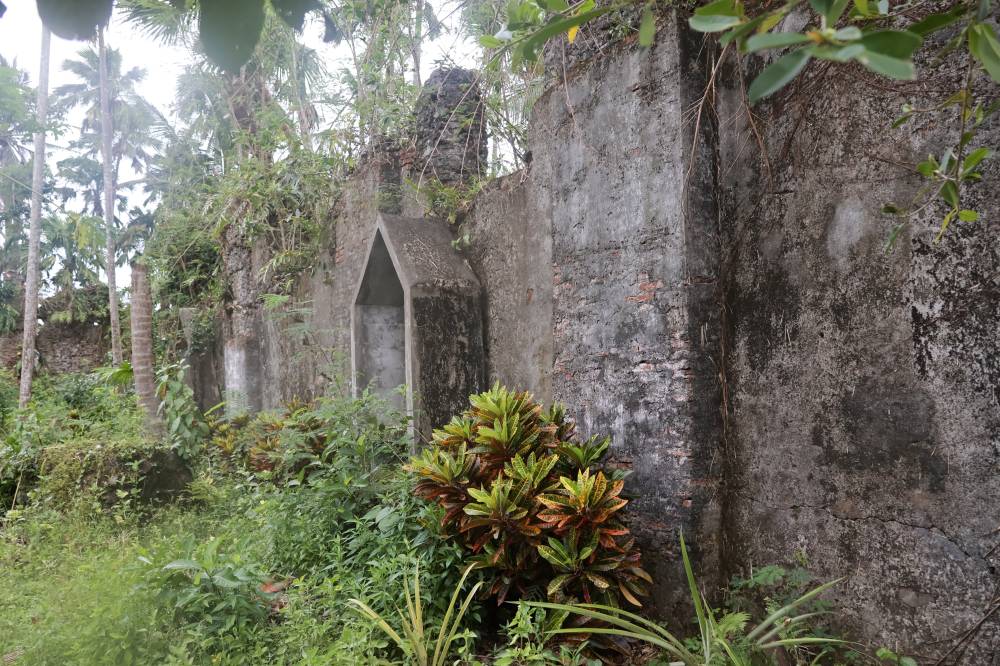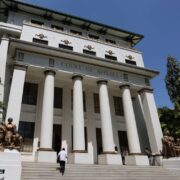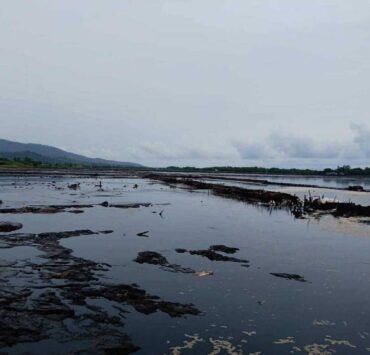Treasure hunts, storms hasten decay of centuries-old church in Cagayan

SANCHEZ MIRA, CAGAYAN—The ruins of the 430-year-old Nagsimbaanan Church in this town, once a vital religious and historical site, have fallen further into disrepair due to repeated typhoons, earthquakes, and illegal treasure hunting.
Also known as the Pata Church, the structure was built by Dominican friars in 1595 under Fray Gaspar Zarpate and Miguel de San Jacinto.
Initially made of wood and later reinforced with stone, the church stood on a six-hectare property in Sitio Nagsimbaanan, Barangay Namuac, near the boundary of Claveria town.
Town records showed that the church was abandoned in the 1890s, its age and exposure leaving it in ruins.
“The site remains a silent witness to the town’s religious history, but both natural calamities and human activities have worsened its deterioration,” tourism officer Carla Pulido-Ocampo told the Inquirer.
Ocampo said the intrusion of treasure hunters and the dumping of garbage made it worse.
“The ruins are in total disrepair,” she lamented.

Devotional stop
Nine years ago, a statue of the Virgin Mary was installed at the site to serve as a devotional stop, especially during Holy Week.
In July 2025, a team from the University of the Philippines School of Archaeology (UPSA) led by Dr. Grace Barretto-Tesoro conducted a study aimed at preventing further damage and reviving community interest in the landmark.
Archaeologists unearthed blue-and-white ceramic fragments dating back to the 1400s, indicating that early villagers traded with Chinese merchants long before the church’s construction.
“These pieces were found beneath the church floor, proving they are older than the structure itself,” Ocampo said.
While the church’s main walls, belfry, sacristy, and convent remain standing, their condition continues to worsen. The site, owned by the Archdiocese of Tuguegarao, is often trespassed by treasure hunters and used as a trail by villagers.
Human activities
Some residents have also begun gardening and raising livestock around the ruins, while piles of trash now cover parts of the old convent grounds.
Recent tropical cyclones—including Nando, Paolo, and Ramil—along with frequent earthquakes in Cagayan Valley and Ilocos, have caused further cracks and erosion, according to UP archaeologists.
Their report noted that “rainwater seeps directly into masonry through cracks,” with repeated wetting and drying weakening the brick and stone materials.
Devotees have voiced concern over a deep gorge that has eroded parts of the convent wall and foundation, threatening collapse. The belfry also shows signs of instability, with a missing keystone and visible cracks.
The UP team has recommended the creation of a Conservation Management Plan to preserve the site, involving heritage experts and national agencies for structural analysis, environmental management, and community education. Immediate stabilization works supervised by licensed engineers were also advised to prevent further collapse.
“A protective ordinance for site management should be enacted as a long-term solution,” the study concluded.

















